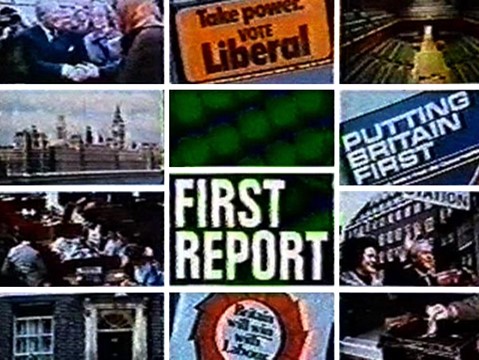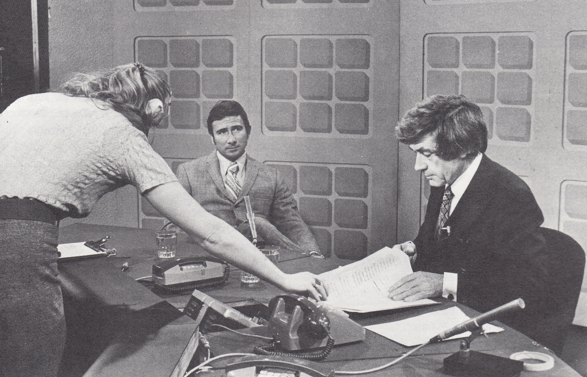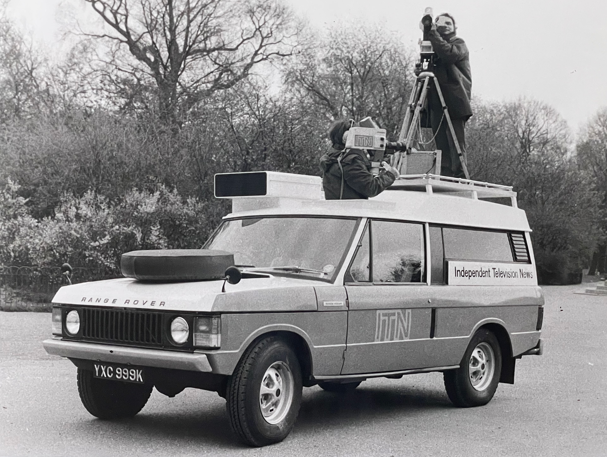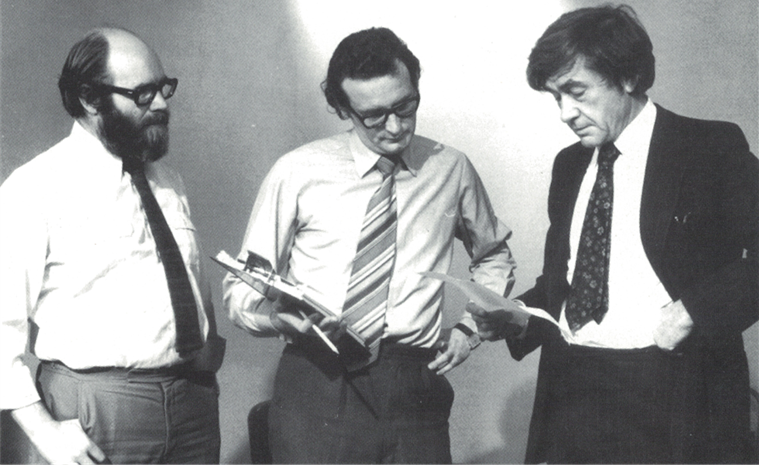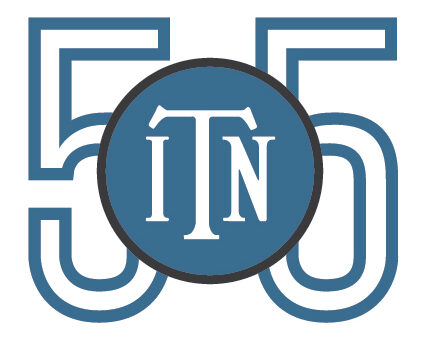By Nigel Dacre
It’s probably a bit of an over-statement to describe First Report as ITN’s “forgotten programme”. But the launch of First Report on October 16th 1972 has certainly been overshadowed by memories of the launches of News at Ten in 1967 and Channel Four News in 1982.
This is partly because the name and on-air time of the programme have chopped and changed over the years. I’ve looked it up, and it’s quite a list: First Report (1972), News at One (1976), News at 12.30 (1987), News at One again (1988), Lunchtime News (1992), ITV Lunchtime News (1999), ITV News at 1.30 (2009), and ITV Lunchtime News again (2015). Hardly a text-book way of establishing a programme brand and a loyal audience!
But despite its lack of recognition, the First Report programme was incredibly innovative. The first commercial weekday lunchtime TV news programme in the UK. A pioneer in the use of TV news OB vehicles and lightweight cameras. And the recruitment of a new generation of female reporters that appeared on the programme – including Joan Thirkettle, Sue Lloyd-Roberts and Sarah Cullen.
Daytime TV
The programme came about because the Government had just removed restrictions on broadcasting hours, allowing for daytime programming on ITV and the BBC. Initially, the ITV companies wanted the programme to be on at noon. But with the support of the Independent Television Authority (the ITA), ITN managed to push that to 12.40pm.
The senior people on the launch included Nigel Ryan, the editor of ITN, Barrie Sales, the programme editor, and Robert Kee, the presenter. Nigel Ryan’s obituary in the Independent in 2014 described First Report as his “proudest achievement”.
The programme focused on Robert Kee carrying out lengthy interviews, including live OB interviews, using a specially adapted Range Rover. In many ways, Robert was an unlikely choice for a daytime ITV audience. He was more on the high-brow end of journalism, and in the same year as the launch of First Report had finished his acclaimed three-volume history of Ireland, ‘The Green Flag’.
One of the reasons that ITN went for Robert was because they wanted First Report to compete head-on with Radio 4’s well-established The World at One, presented in the early 1970s by William Hardcastle. And within a short time, First Report did indeed make its mark interviewing politicians, commentators, and newspaper editors.
Annual Guide
In July 1972, the ITA was renamed the Independent Broadcasting Authority (the IBA), and they published an annual Guide to Independent Television. The 1974 edition includes a fascinating two-page article about First Report. It said that after launching in 1972, the programme had “rapidly established itself as a distinctive news programme with its own special character”.
It talked about the problems facing the new programme:
“The production of the 20-minute First report raised several problems – the main one being the shortage of time to get a programme together by 12.40. One way of doing it would have been to pre-film items… It was decided not to do this. Instead, the aim was to bring in fresh news since the breakfast papers.”
Indeed, according to the article, the programme’s unofficial slogan was “it happened this morning”. In today’s 24-hour news and social media environment, this is taken for granted – but in 1972, it was clearly ground-breaking for TV news to be this reactive during the daytime.
The IBA article went on to describe the innovative technical operation behind the programme:
“On the technical side, First Report produced another first – the smallest outside broadcast in the country, housed in a Range Rover that can nip through traffic and when going into action is linked ‘live’ to the studio in minutes… The outside broadcast unit is equipped with two Fernesh KCR 40 hand-held cameras with colour capability. ITN is the first company in the world to use these latest cameras, ideal for vox populii television.”
The article also outlined how the programme had, on occasion, been extended to cover party conferences, by-elections, the end of the Vietnam war, and Watergate.
Newsletter Articles
The October edition of the ITN 1955 Club Newsletter included two articles from former ITN staff who had worked on the first programme – the presenter John Suchet, who was First Report’s first chief sub, and a former ITN production manager, Lawrie Read, who worked on the programme’s first live OB interviews.
John Suchet had just joined ITN in 1972 as a scriptwriter, when Barrie Sales rang him at home to offer him the job as the programme’s chief sub. John remembers: “At the BBC you were not allowed even to apply to be a chief sub until you had served three years as a writer. Here I was at ITN, a chief sub within three months. Sitting opposite Barrie Sales was an education in television news, a daily masterclass in programme editing”.
But John’s main memory was working with Robert Kee:
“To say his presenting style was idiosyncratic is an understatement. He ignored timings. Given three minutes for an interview, if it was going well, he’d go on for four. Not going well? Two minutes will do. On air I spent the whole programme counting. I can still count minutes and seconds quicker than pounds and pence.
Robert was impossible to write for. I encouraged the team to try to write in his style. They never managed it, nor did I. But I learned from watching Robert present. Ignore the gallery. Speed up because we’re over? Never. Talk straight to the viewer, as if they’re across the table from you. It’s what earned him a place as one of the Famous Five on the soon to be launched breakfast sofa.”
For Lawrie Read, the first programme had its challenges:
“After a couple of rehearsals the previous week, on the great day it was decided to do Vox Pops with Robert Kee in the studio and the OB in Trafalgar Square.
The thinking was that it would be guaranteed that members of the public would be there to interview. Well, they were but it didn’t quite work out as expected as the three people we were directed to interview (live on-air) were a person who didn’t speak English, a person who ran away as we approached them, and a person with hearing problems (who, incidentally, approached me immediately after the aborted two-way requesting a piece of paper on which he wrote ‘I have also appeared on the David Frost programme’!).
Clearly, a difficult first day, but the programme soon settled down to its new format of covering the latest news with studio and outside broadcast interviews.
1974 Edition
As an example of the programme’s approach to the day’s news, it’s interesting to watch an edition from 1974. It’s on YouTube, and the link is below. After the stirring title music (with green hands typing as stock news images fill the screen), Robert is seen in the studio with three guests. Here is his introduction to the programme, outlining the headlines:
Hello… A forecast this morning from Mr Jeremy Thorpe, the Liberal leader, that another member of the labour party will defect by midnight.
Len Murray, General Secretary of the TUC, is lashing out at the media about their treatment of the strike at Ford’s
And after the charges and counter charges of lying and moonshine over the rate of inflation with which the election opened… we’ve got protagonists from all three main parties, including Denis Healey, the Chancellor of the Exchequer.
Robert’s delivery style can be described as formal and serious, and the headlines were very much rooted, as intended, in that morning’s news, with a serious, political news agenda.
1974 was, of course, a year of high political drama, with two general elections – and the headlines show that within two years of its launching, the programme was able to get into its West End studio three top politicians, including the Chancellor. No small achievement and an indication that the programme was being taken seriously by the Government and the political establishment of the day.
Indeed, looking back, that was probably one of the main achievements for First Report. After the success of the launch of News at Ten in 1967, it helped further establish ITN’s credentials as a major UK news organisation – carrying out big-name live interviews on breaking stories, day after day.
News at One
The name First Report only lasted 4 years until 1976, when the programme became News at One – presented by a roster of presenters, including Leonard Parkin and Peter Sissons.
In 1995, ITN produced a booklet marking the 40th anniversary of the company, and wrote a chapter about ITN’s lunchtime news programming, recalling that in 1972 “critics within ITV favoured an entertainment-led schedule and doubted that a lunchtime bulletin would find an audience”.
Well, it was to ITN’s credit that they proved otherwise with what was, for its time, a highly innovative programme, both editorially and technically, with a distinctive approach and format.
On a personal note, I was editor of News at One and then the Lunchtime News (working with John Suchet, who by then, of course, was the programme’s presenter) in the late 1980s. It still had its own ‘special character’, and was an exciting programme to work on. It had its own newsroom in Wells St, with its own output team, and the editor and production team had a lot of independence in making running order decisions.
But, as I’m sure many former ITN staff will agree, it was also one of the most challenging programmes I worked on at ITN! It specialised in breaking news, and the packages often came in while the programme was on air. Live technology, as it was in 1972, was still quite an adventure. And it was a daily battle to end the programme cleanly and on time.
Link for First Report programme 1974.
First Report Photos
